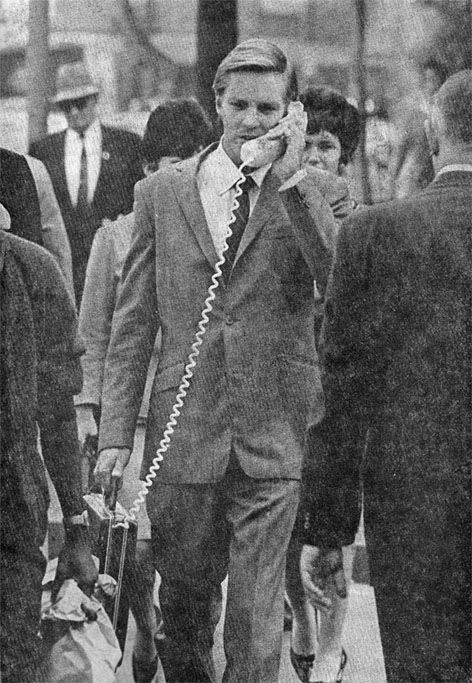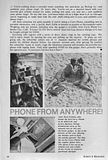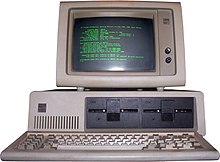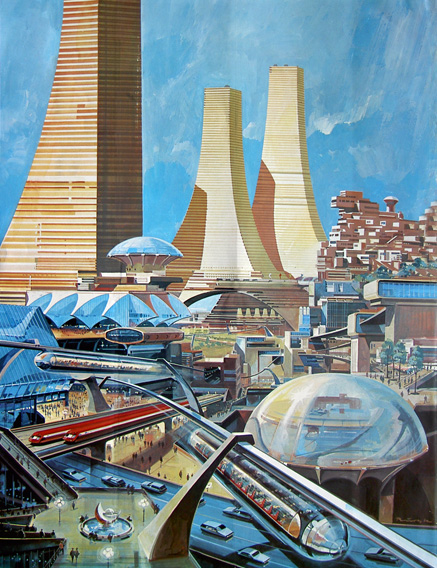Internet Debris

A collection by Neal McKenna
McKenna Ink Thesis Editing Service
To add your comments,
click here.
NOTHING posted here is mine!
Internet Debris does not claim rights
to any of the photos or media content posted to the site.
No copyright infringement is intended.

A collection by Neal McKenna
McKenna Ink Thesis Editing Service
To add your comments,
click here.
NOTHING posted here is mine!
Internet Debris does not claim rights
to any of the photos or media content posted to the site.
No copyright infringement is intended.
A collection by Neal McKenna
McKenna Ink Thesis Editing Service
To add your comments,
click here.
NOTHING posted here is mine!
Internet Debris does not claim rights
to any of the photos or media content posted to the site.
No copyright infringement is intended.
Image Via Retrofuturisms
1960s Predictions about Today
We grew up in the Jet Age. The Space Age. The Computer Age. Cars were getting longer, sleeker, and faster. The world, too, was moving more and more rapidly. What on earth would the future be like over 45 to 50 long years distant?
One prediction was made by Philco-Ford in 1967. Click here to watch the video. See for yourself just how close they came. All in all, this was a pretty impressive stab at how the computerized home of the future would be run.
By the way, that guy who cringes when he pays his wife's bill electronically is actually future game show host Wink Martindale.
It has long been a human impulse to predict the future. George Orwell — who might have needed Lexapro — predicted a cold, repressive society where your every move was watched by the governmental authorities. While some might argue that he wasn't far off, the argument could also be made that he missed it by a mile.
Jules Verne penned Paris in the Twentieth Century in 1863, about life a hundred years hence. It too predicted a dominating government which subsidized the arts, demanding that they be simple enough for the most uneducated to understand. He also mentioned gasoline-powered automobiles, calculators, society's strong dependence on electricity, high speed trains, and "a worldwide "telegraphic" communications network" that sounded very much like our beloved internet.But back in the sixties, many of humankind saw themselves surviving into the next century. I was born in 1959, and I can remember looking at my father and realizing that when I was his age, it would be 2000. Profound stuff for a kid to ponder, to be sure.
What would the world be like then? Well, we would certainly be on our way to visit Jupiter with the aid of cold-storage hibernation and a sophisticated computer running the spaceship. 2001, a Space Odyssey was simply too realistic to be be inaccurate. So I took that for granted, along with future commercial travel to and from the moon. Actually, that plan is in the works, albeit in its infancy.

Image Via Gordon and the Whale.com
Another source of future speculation, at least for us youngsters, was the Jetsons. We looked forward to zipping around in our own rocket cars and having the robot maid cleaning up the various messes we would make. Indeed, many predictions about life in the 21st century revolved around, not whether we would fly to local destinations, but HOW. Would it be flying cars? Personal helicopters? Jet packs strapped to our backs?Actually, the jet pack was around in the 1960's. The Bell Rocket Pack was seen in James Bond movies, Lost in Space, and at live demonstrations at Disneyland. But I wouldn't call it a common form of transportation today, even though a few private individuals own their own rocket packs.
So here we are. Some of the things we do would be viewed in amazement by our youthful selves 30-40 years ago. Yet, all in all, life in the 21st century really doesn't look a whole lot different from life in 1967.
Via I Remember JFK
Future Living

 Philco-Ford had their own ideas about how the home of 1999 would look. The 20th century wanes and families live in horizontal beehives that are powered by fuel cells that provide all electricity, heat, and water. Ah, domestic fuel cells; the 8-track tape of domestic power. Whatever happened to their bright promise? As you enter the house of 1999, you detect the subtle scents injected into the perfectly regulated air provided by the climate control system–the sort that I switched off in my house right after we moved in because it costs the Earth to run and only works in the living room anyway. Inside, the painfully Star Trek Moderne living room is dominated by a gigantic television that is not only flat screen, but 3D or even holographic. If the console on the right is just to control the goggle box, then its clear that Philco-Ford understood the nightmare of 21st century remotes – just not their scale. |
 And what's this tucked away in the cellar? Yes, it's the home computer that runs everything. Only half the size of a standard mainframe, it has the computing power somewhere between that of a Sinclair ZX-80 and a modern greeting card. The whole place is run by self-diagnosis-ing electronics that can even summon the repairman automatically. There's also computer games, computer learning, and computer shopping. Computers also allow parents to spy on, sorry, "monitor" the kids, reminds them of appointments, acts as a videophone, and (all together now!) balances the cheque book. |
 As evening falls, the family of the future retires to bed. In this case, it's a computerised (what else?) bed where the temperature is automatically regulated, so there is no need for blankets. In other words, it's bloody hot in there. And don't worry about the strange whispering that you hear as you doze off. That's the subliminal education system. Oceania has always been at war with East Asia... Oceania has always been at war with East Asia... Oceania has... Notice there's no place to set a glass of water? End tables are so 20th century. |
Imagine a Phone You Can Take Anywhere!
The Carry-phone — 1967 
But what does a portable phone have to do with snogging?
You’re out on a deserted beach with your favorite girl, nobody around for miles, nothing but sand, sun and sea — and suddenly your phone rings!
The old science magazines from the 1950s and ’60s were pretty far out with some of their predictions, but this article from a November 1967 Science & Mechanics was right on the money.
Groovy, man. It’s 1967 and the Carry Phone is the latest in portable technology. Weighing “only” 10 pounds and priced at just $3,000, the Carry Phone was predicted to “become as popular as the transistor radio.”
Groovy, man. It’s 1967 and the Carry Phone is the latest in portable technology. Weighing “only” 10 pounds and priced at just $3,000, the Carry Phone was predicted to “become as popular as the transistor radio.”
Of course, the phone had to get a little smaller. And the price had to come down a bit — that $3,000 price tag in today’s dollars would be a hefty $19,288.14. 

But making a phone call from an airplane? Or while walking down the street?
Yeah dude, I can dig it.


Via Yesterday's Clues Via Modern Mechanics
Thin Tube Foretells Wall TV — 1958

BECAUSE OF NEW TECHNIQUES in the field of electronics, airplane instrument panels and home television sets may soon have something in common — a rectangular picture tube less than three inches thick. The thin cathode-ray tube was invented by William Ross Aiken and developed in the Kaiser Aircraft and Electronics Corporation laboratories.
Military uses for the new TV tube were developed for the Douglas Aircraft Company. For the aircraft pilot, the thin TV tube will serve as an electronic windshield, showing an artificial picture of the terrain and sky conditions about him.
For the TV viewer at home, the new picture tube may result in new designs for sets, with screens mounted in any wall or hung like picture frames. The picture tube, only 2-5/8 inches thick, is made of two rectangular pieces of plate glass with about an inch of space between them. The edges are sealed with powdered-glass solder to hold the vacuum. The surface of the thin tube is the equivalent of a 21-inch conventional screen.
In the thin tube, the electron beam is injected at the bottom of one side. Deflection plates along the bottom edge bend the beam upward between the front and back glass walls. The inside of the front wall is coated with a new transparent phosphor which is said to improve the contrast. The thin TV tube also is reported to have sharper focusing properties.
A new method of printing electrode elements on the inside surfaces of the glass eliminates the need for assembled metal parts. Printed circuits are used in the tube controls. The thin tube will replace many of the instruments needed for blind flying of an airplane and can be operated by a small electronic computer. A similar control system was developed by Allen B. Dumont Laboratories, Inc., for Bell Helicopter Corp.
Flying Saucer Camera — 1953

Clock Phonograph — 1930s

Similar to the CD player alarm clocks we have now, this device offers a built-in phonograph that "awakens you in the morning to the sound of music". The "Clock Phonograph" was first shown in a 1931 issue of Modern Mechanics.
Both phonograph and clock motor is contained in a box the size of a large camera, and the hour for the morning serenade is set by knob as in an alarm clock. When out of use the case is folded up to make a neat and attractive table or mantel ornament. [Source]
Both phonograph and clock motor is contained in a box the size of a large camera, and the hour for the morning serenade is set by knob as in an alarm clock. When out of use the case is folded up to make a neat and attractive table or mantel ornament. [Source]
Wrist-Watch Radio — 1947

First introduced in 1947, this wrist-watch radio used a "new miniature radio transceiver being developed by the U. S. Bureau of Standards", capable of receiving/transmitting short waves while also picking up standard radio broadcasts.
This world’s smallest microtube was made possible by the elimination of bulky wires, which have been replaced by a silver chloride circuit stenciled on a slice of plastic or ceramic material. Developed as a result of co-operative research with industry, the miniature tube has various military applications aside from its use in the wrist-watch radio. [Modern Mechanics]
The supercomputer era began in the early 1960s and were designed primarily by Seymour Cray at Control Data Corporation (CDC), which led the market into the 1970s until Cray left to form his own company, Cray Research. He then took over the supercomputer market with his new designs, holding the top spot in supercomputing for five years (1985–1990).
In the 1980s a large number of smaller competitors entered the market, in parallel to the creation of the minicomputer market a decade earlier, but many of these disappeared in the mid-1990s "supercomputer market crash."
Today, supercomputers are typically one-of-a-kind custom designs produced by traditional companies such as Cray, IBM and Hewlett-Packard, who had purchased many of the 1980s companies to gain their experience. Currently, Japan's K computer, built by Fujitsu in Kobe, Japan is the fastest in the world. It is three times faster than previous one to hold that title, the Tianhe-1A supercomputer located in China. [Wikipedia]
This world’s smallest microtube was made possible by the elimination of bulky wires, which have been replaced by a silver chloride circuit stenciled on a slice of plastic or ceramic material. Developed as a result of co-operative research with industry, the miniature tube has various military applications aside from its use in the wrist-watch radio. [Modern Mechanics]
The Super Computer
Image Via Computer History Archives
CDC Control Data 6600 — 1963
A supercomputer is a computer at the front line of current processing capacity, particularly speed of calculation.The supercomputer era began in the early 1960s and were designed primarily by Seymour Cray at Control Data Corporation (CDC), which led the market into the 1970s until Cray left to form his own company, Cray Research. He then took over the supercomputer market with his new designs, holding the top spot in supercomputing for five years (1985–1990).
In the 1980s a large number of smaller competitors entered the market, in parallel to the creation of the minicomputer market a decade earlier, but many of these disappeared in the mid-1990s "supercomputer market crash."
Today, supercomputers are typically one-of-a-kind custom designs produced by traditional companies such as Cray, IBM and Hewlett-Packard, who had purchased many of the 1980s companies to gain their experience. Currently, Japan's K computer, built by Fujitsu in Kobe, Japan is the fastest in the world. It is three times faster than previous one to hold that title, the Tianhe-1A supercomputer located in China. [Wikipedia]
The Personal Computer

IBM 5150 — 1981
Early personal computers — generally called microcomputers — were sold often in kit form and in limited volumes, and were of interest mostly to hobbyists and technicians. Minimal programming was done with toggle switches to enter instructions, and output was provided by front panel lamps. Practical use required peripherals such as keyboards, computer terminals, disk drives, and printers.Micral N was the earliest commercial, non-kit microcomputer based on a microprocessor, the Intel 8008. It was built starting in 1972 and about 90,000 units were sold. In 1976 Steve Jobs and Steve Wozniak sold the Apple I computer circuit board, which was fully prepared and contained about 30 chips.
The first successfully mass marketed personal computer was the Commodore PET introduced in January 1977. It was soon followed by the TRS-80 from Radio Shack and the popular Apple II. Mass-market ready-assembled computers allowed a wider range of people to use computers, focusing more on software applications and less on development of the processor hardware.
Through the late 1970s and into the 1980s, computers were developed for household use, with software for personal productivity, programming and games. One such machine, the Commodore 64, totaled 17 million units sold, making it the best-selling single personal computer model of all time. Somewhat larger and more expensive systems — although still low-cost compared with minicomputers and mainframes — were aimed at office and small business use. Workstations are characterized by high-performance processors and graphics displays, with large local disk storage, networking capability, and running under a multitasking operating system. [Wikipedia]
Through the late 1970s and into the 1980s, computers were developed for household use, with software for personal productivity, programming and games. One such machine, the Commodore 64, totaled 17 million units sold, making it the best-selling single personal computer model of all time. Somewhat larger and more expensive systems — although still low-cost compared with minicomputers and mainframes — were aimed at office and small business use. Workstations are characterized by high-performance processors and graphics displays, with large local disk storage, networking capability, and running under a multitasking operating system. [Wikipedia]
Kodak’s First Digital Still Camera — 1975
By Charlie Sorrel
Let’s take a trip back to 1975, the year the digital camera was born. Here is the Gadget Lab entry as it would have appeared 36 years ago...

The camera described in this report represents a first attempt demonstrating a photographic system which may, with improvements in technology, substantially impact the way pictures will be taken in the future.
Kodak’s Steve Sasson has come up with a brand new alternative to film. Dubbed “Film-less Photography”, the prototype camera records images and plays them back on a television set. Sasson hacked together the camera from spare parts: the lens is from a Super 8 movie camera, the image is captured by a CCD (Charged Coupled Device, an array of capacitors which convert light into an electrical signal) and the resulting image is recorded onto a cassette tape. The whole thing is powered by 16 nickel cadmium batteries.
The portable electronic still camera takes 23 seconds to record a 100 line image to tape. To view the picture, you pop out the cassette and slip it into the custom-built playback device. This uses another cassette player and a frame store to boost the image to 400 lines and outputs a standard NTSC signal for use on any television. The Kodak engineers are optimistic:
By the mid-1970s, Kodak had invented several solid-state image sensors that "converted light to digital pictures" for professional and home consumer use. In 1986, Kodak scientists invented the world's first megapixel sensor, capable of recording 1.4 million pixels that could produce a 5x7-inch digital photo-quality print.

The camera described in this report represents a first attempt demonstrating a photographic system which may, with improvements in technology, substantially impact the way pictures will be taken in the future.
Kodak’s Steve Sasson has come up with a brand new alternative to film. Dubbed “Film-less Photography”, the prototype camera records images and plays them back on a television set. Sasson hacked together the camera from spare parts: the lens is from a Super 8 movie camera, the image is captured by a CCD (Charged Coupled Device, an array of capacitors which convert light into an electrical signal) and the resulting image is recorded onto a cassette tape. The whole thing is powered by 16 nickel cadmium batteries.
The portable electronic still camera takes 23 seconds to record a 100 line image to tape. To view the picture, you pop out the cassette and slip it into the custom-built playback device. This uses another cassette player and a frame store to boost the image to 400 lines and outputs a standard NTSC signal for use on any television. The Kodak engineers are optimistic:
We’re not so sure. Who would want to look at pictures on a TV screen? And even with leaps and bounds in technology, I predict that people won’t want to press the shutter and wait for the camera to snap a picture seconds later. We’ll stick with our Instamatics.
Digital camera technology is directly related to and evolved from the same technology that recorded television images. In 1951, the first video tape recorder (VTR) captured live images from television cameras by converting the information into electrical impulses (digital) and saving the information onto magnetic tape.By the mid-1970s, Kodak had invented several solid-state image sensors that "converted light to digital pictures" for professional and home consumer use. In 1986, Kodak scientists invented the world's first megapixel sensor, capable of recording 1.4 million pixels that could produce a 5x7-inch digital photo-quality print.
In 1987, Kodak released seven products for recording, storing, manipulating, transmitting and printing electronic still video images.The first digital cameras for the consumer-level market that worked with a home computer via a serial cable were the Apple QuickTake 100 camera (February 17 , 1994), the Kodak DC40 camera (March 28, 1995), the Casio QV-11 (with LCD monitor, late 1995), and Sony's Cyber-Shot Digital Still Camera (1996). [About.com]
The office of the future

The future office was a particularly intriguing concept, since it was widely assumed that (thanks to automation) most people would no longer have to work by the 21st century. Therefore, the futuristic office was often populated by one lonely man who spent his day pushing buttons and observing screens full of information.
How far off were the predictions for the workplace of yesterday’s tomorrow? Unlike the futuristic drawings and renderings of previous decades, many of us continue to work in the service sector and there are still humans doing manual labor. Most of us are still waiting to be replaced by robots so we can spend every day at the beach. Via Gajitscom
To add your comments, click on
links to this post
here or below. It will take you to a stand-alone copy of this page. There, you will find the comments box at the very bottom, so feel free to let 'er rip.
links to this post
here or below. It will take you to a stand-alone copy of this page. There, you will find the comments box at the very bottom, so feel free to let 'er rip.


What lies beneath...
Spooooky Reading...
It's not too early to think about Christmas gifting.
What lies beneath...
It's not too early to think about Christmas gifting.







No comments:
Post a Comment